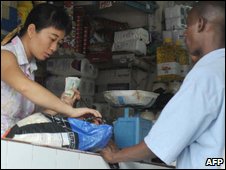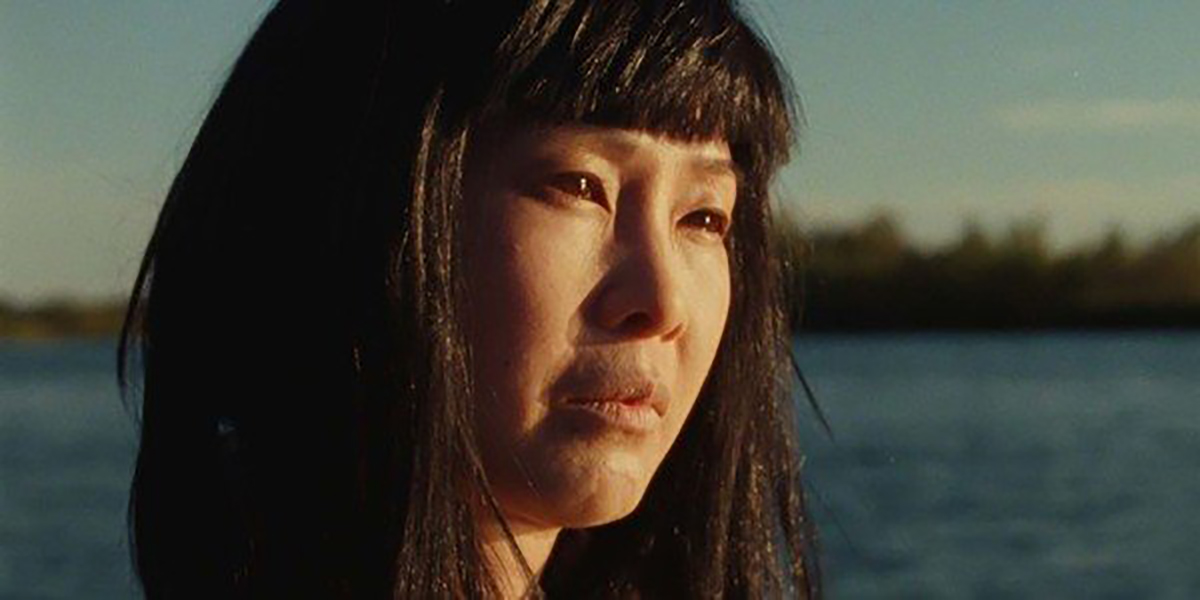
I posted earlier this week about inter-ethnic tension between the Black and the Asian community. That post has garnered a bit of heat, much of it warranted. For one thing, I opened the post citing two examples of criminal violence perpetrated against Asians by Black offenders, and went on to quote a commentary written by a Black man who was raised to target Asians for petty theft. Although the intent of my post was to lay out some recent examples of conflict between the Black and Asian communities (and to go from there to describing how both communities are guilty of internalizing untrue racust stereotypes about one another), the post unintentionally left some readers with the impression that the tension manifests, almost exclusively, as violent crime perpetrated by Blacks against Asians, thereby perpetuating the very stereotype that Blacks are predominantly criminal. I certainly failed to balance the recent spate of Asian-targeted crimes with the murder of 15-year-old Latasha Harlins, who was killed by an Asian shopkeeper presuming Harlins to be a shoplifter.
Restructure criticized me, writing:
I understand the intent of this post, but I think it was poorly executed. I think you should have written this post while being hyper-paranoid about perpetuating stereotypes about black criminality/danger/violence.
Since I strongly value Restructure’s opinion on anything I write, this comment gave me pause for thought. On the one hand, Restructure is right that my post was perhaps a little too careless in its depiction of the problem, leading it to over-emphasize the importance of the outright criminal acts that have grabbed the headlines lately (and consequently to have it fall into the same tired tropes of Black criminality). And, for that, (and other weaknesses in the writing of my original post) I do apologize.
However, on the other hand, another commentor, jm, wrote:
I consider myself a liberal and a fair person. And so that means I won’t say the “safe” thing for fear of offending people. Yes, inter-ethnic tension is wrong as is violence. But in your attempt to address this issue, you’ve perhaps skirted the elephant in the room and instead, chose to bend over backwards to excuse VIOLENT criminal behavior of people who just happened to be black.
[…]
There MAY be interethnic tension between blacks and asians but the majority of the violent perpetrators are black and you cannot avoid that.
Other commentors dismissed the recent acts of violence as representative of anything more than kids thinking that Asians are fun to beat up on. Still other commentors (curiously) criticized the post for having too “kumbaya” a tone, and instead advocated that perhaps segregation is indeed the best course of action.
After having read all 22 of the comments on my first post, I have concluded one thing: many people didn’t like the post, but most people didn’t like it for different reasons.
Based on these diverse reactions, it seems that the issue of inter-ethnic tension between the Black and the Asian community is an exceptionally hot-button debate that promotes varied and disparate opinions. Clearly, than, this topic deserves more than a single post, written hastily in the middle of my work-day. Instead, this issue deserves a series of posts — a series that can hopefully encourage discussion about the complex, and apparently exceedingly controversial, relationship between the African American and Asian American communities.
In this post, I’d like to clarify a point that I did not make clear in my original post: we’re talking about the inter-ethnic tension between Blacks and Asians right now because of the assault spree in Brooklyn and the recent murder of Tian Sheng Yu in California. But, these are sensationalized, headline-grabbing crimes that are symptomatic of, but not literally representative of, the tensions that exist between the Black and Asian communities. For every Tian Sheng Yu and Latasha Harlins that makes the newspapers, there are one, two, maybe even ten daily examples of mistreatment and hostility that never makes the press.
More importantly, it’s these mundane, day-to-day interactions — not the headline-grabbing crimes — that are the root manifestations of the inter-ethnic tension between Blacks and Asians. While it’s tempting to conclude from the sensationalist stories of assault and murder that inter-ethnic tension between Blacks and Asians are exclusively represented by examples of physical violence, that’s like concluding from stories of hate crimes and lynching that all racism requires a pillow case and a burning cross. It’s also tempting to conclude from the sensationalist stories of assault and murder (which recently have involved Black assaulters targeting Asian victims) that Blacks universally target and victimize Asians for crime; yet interrogation of the day-to-day incidents reveal that both Asians and Blacks are capable, and culpable, when it comes to perpetuating the tension and hostility between our communities.
The mundane, day-to-day hostility and distrust is far more prevalent than the headline-grabbing crimes. They are also more sinister because they are rarely interrogated in the spotlight of forums like these, because they are so subtle as to exist only as an undercurrent between our communities, contextualizing inter-ethnic interactions without ever being challenged.
These day-to-day interactions can be so subtle that they barely register as a conscious affront even to the participants. Yet who is to judge the impact when an Asian grandmother refuses to hand a customer his change directly, but instead leaves it on the counter so as to avoid touching Black skin? Who is to judge the impact when the Black child openly mocks the Asian child for his accented English and not-quite-fashionable mode of dress? Who is to judge the impact when the Asian father clutches his daughter more tightly to him whenever they pass a Black man on the street? Who is to judge the impact when the Black veteran, unemployed, sees the same Asian faces he fought in Vietnam now taking the last dollars he has left, out of the community?
Most interactions are quick and unassuming; only rarely do these interactions become violent and criminal. Yet, it is these interactions that, left unchallenged, perpetuate the untrue stereotype amongst Asians that Blacks are rude and criminal — despite ample evidence to the contrary. And it is these interactions that, left unchallenged, perpetuate the unture stereotype amongst Blacks that Asians are disdainful and opportunistic — again, despite ample evidence to the contrary.
In a way, I feel like I stand at a crossroads between both communities (although, I confess that I have experienced far more anti-Black sentiment in the Asian community than I have experienced anti-Asian sentiment in the Black community). I have seen Asian shopkeepers follow my African-American boyfriend around a store, keeping a wary eye on him from the moment he walked in the door, as though he is liable to pocket every trinket on the shelves if they turn their back on him for an instant. And, I have seen Black girls mutter and insult me, behind my back and to my face, particularly when they see me arm-in-arm with electroman.
And, above all, I remember the words of my mother who was indoctrinated, from childhood, with the notion that dark skin equated with poverty, disease, laziness and untrustworthiness. I remember my mother who believed that we, as East Asians, shouldn’t mingle with anybody who had darker skin than us (although, ironically, I am half-Cantonese and am several shades darker than both my sister and my mother). I remember my mother extending that attitude to my Asian Indian best friend in grade school; I wasn’t allowed to be friends with him. Later, she extended that same attitude to electroman, shunning my relationship with him as though he was ‘beneath’ me, socially and intellectually.
But no one writes a newspaper story about these daily interactions, so small as to be virtually invisible to all involved, yet fueled by the most deeply ingrained of racism and misunderstanding. No one talks about how a simple insult, hurled by a Black customer in frustration or anger at being treated like a criminal by an Asian shopkeeper, widens the gulf between both communities. And the wider the gulf, the more ingrained our negative stereotypes of one another, and the more these hostilities become fodder for an enraged child (Black or Asian) to lash out against a member of the Other in a sensationalized (and completely unjustifiable) crime of violence. The violence, thus, is symptomatic — but not representative — of the inter-ethnic tension between Blacks and Asians.
Therefore, while it is easy to focus on the recent sensational crimes, we must not become distracted by them. I think the far more prevalent problem are all the incidents and attitudes we’ve encountered, and all the narratives we experience, that we don’t talk about because they never make the papers. But bloggers, unlike mainstream media, aren’t beholden to readership statistics the way the press is; so why is it that even in the blogosphere, we seem to eschew discussion of the day-to-day racism that exists between the Black and Asian community (and yes, I am guilty of this too), and are only now talking about it when it has become sensationalized?
Update: As I was publishing this post, I got this article in my Google alerts: NAACP Hopes to Diffuse Tension Between Asians and Blacks in San Francisco. Some choice quotes:
Human Rights Commissioner Linda Richardson told New America Media that the commission held a hearing Thursday in Chinatown and that their executive director also had private meetings with Asian-American leaders with regard to the recent violent acts.
“The commission will concentrate on education about this issue, and in bringing the Asian and African-American communities together to begin a healing process,” Robinson said.
African-American leaders are already working on “our own [black-on-black] violence, but they also don’t want these recent incidents to lead to a general castigation of the entire African-American community as perpetrators of these racial crimes,” she said. “It is only a minority of the population responsible for these acts, and that is unacceptable.”
[…]
Out in the streets of Bayview-Hunters Point, near the Muni stop where Huan Chen was attacked, long-time resident Bernard Robinson says the community “needs jobs for young students…That’s why there’s so much violence and robbery here because they have nothing to do. Parents also don’t look out enough for their kids and guide them.”
Robinson, 62, said he’s witnessed violent acts by African-American men on Asians, and he’s also seen black-on-black violence in his neighborhood. Robinson appealed to his neighbors to “live and work together to end the violence.”
[…]
Rudy Asercion, executive director of Westbay Pilipino Multi-Service Center, said the NAACP is primarily concerned with diffusing the tension between Asians and African Americans in the city so that there would not be any retaliation from Asian Americans and further violence from either group. Asercion supports the NAACP’s move and the belief of the convening group “that it will take a sustained and cooperative effort among all communities to stop the violence.”
Update II: Yikes. Don’t write your posts at 3 am in the morning, folks! I’ve edited some of the grammar in this post so it doesn’t sound like crazy rambling.

